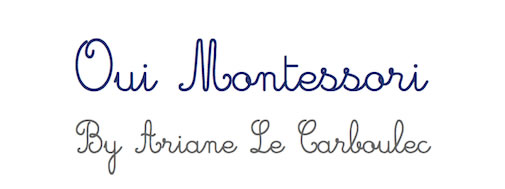For over 20 years, I’ve encouraged parents to think of themselves as the pilot of their home. As adults drawn to Montessori principles, we are often sensitive, and setting limits can feel uncomfortable or even unkind. But the opposite is true: for young children, limits are a profound expression of love. They create a sense of safety and security.
Imagine you’re boarding a flight. Let’s assume none of you have a pilot’s license. The pilot announces, “We’re going to Rome, okay?” This would not feel safe. You wouldn’t trust the pilot to know what they’re doing, and you wouldn’t be able to relax or enjoy the journey.
Now imagine the pilot says, “Welcome aboard! We’re flying to Rome. It might be smooth or rough, but we’ll arrive by 3 PM local time. Sit back, relax, and enjoy the flight.” You’d feel reassured and confident that the pilot is in control.
This is the same for children. When we confidently “steer the plane,” they feel safe and secure. One of my favorite quotes from a Montessori trainer sums this up beautifully: “Your role as parents is to give your child limits with love, or the world will give them limits without love.”
Freedom Within Limits
Montessori embodies this philosophy, offering children freedom within limits. These boundaries aren’t constraints—they’re like the railings on a bridge, offering support and safety as children navigate their growth and development. True freedom, as Montessori teaches, comes with responsibilities.
As Dr. Montessori observed, “To let a child do as he likes when he has not yet developed any powers of control is to betray the idea of freedom.” Ground rules are simple: respect for self, others, and the environment. It’s our responsibility as adults to stop behaviors that could cause harm—whether to the child, others, or their surroundings.
For example, imagine your toddler is happily playing at the playground, and it’s time to leave. You explain that it’s almost time to go and give them a few minutes’ warning. But when the time comes, they refuse to leave. Setting a clear limit, such as, “I understand you’re having fun, but it’s time to go home,” and calmly following through by helping them transition, teaches them that their feelings are acknowledged, but the boundary remains.
Without this limit, they may feel overwhelmed by their emotions and unsure of what to expect next, much like passengers on a flight with a pilot who isn’t in control.
Parenting with Love and Confidence
When turbulence happens mid-flight, you’d expect the pilot to calmly announce, “We’re entering some turbulence. Please buckle up.” You wouldn’t want passengers dictating the course. Imagine if passengers could enter the cockpit and say, “I’m not really enjoying this turbulence. Can you change direction?” And the pilot would comply and veer off course to appease them. And the pilot complies, veering off course to appease them. Would you feel safe? Probably not. You’d question whether the pilot is truly in control or has the expertise to handle the situation.
In parenting, turbulence comes when children test limits. If you waver or change direction at their resistance, it can make them feel unsafe. Instead, staying the course helps them feel grounded and loved.
Setting and maintaining limits can be challenging, but these clear boundaries—or cadre (framework), as we say in French—help children blossom. Just as a steady pilot reassures passengers, parents who guide with calm and confidence allow children to feel safe.
So, the next time you face a moment of turbulence with your child, remember: you’re the pilot. Stay calm, hold steady, and guide with both confidence and care. By setting loving, firm boundaries, you’ll help your child feel safe and secure as they navigate the journey of childhood.
Need help being the pilot of your home? Contact Oui Montessori parent coaching services to get personalized support.

